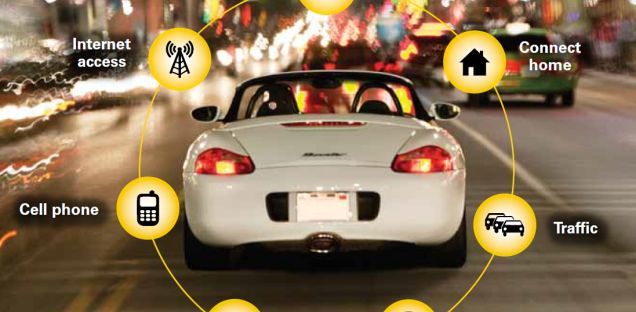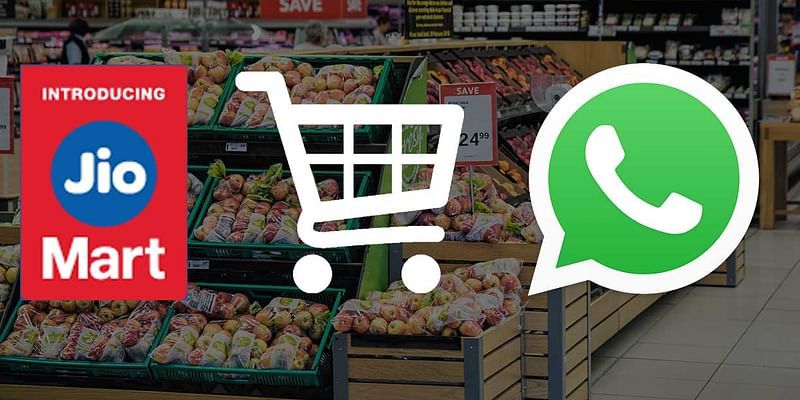How Smart Vehicles will change the way we travel in future

Sophisticated technologies bring in a slew of both tactic as well as strategic transitions in our professional as well as personal lives. In this article, I have detailed how the latest technologies significantly impact and instigate all kinds of vehicles to be smarter in their function so that driving becomes simpler and safer. And at the same time, travel becomes productive for occupants.
Pioneering technologies for next-generation smart vehicles
Connectivity and service paradigms - There are a cornucopia of pioneering technologies emanating and evolving fast in the hot IT field capturing and captivating the imagination of professionals as well as common people alike. Connectivity is the principal one that has permeated deeper decisively to set a stimulating and sustaining foundation for uninhibitedly breeding and building a bevy of delectable business innovations.
The Internet is being prescribed as an open, public, ubiquitous and affordable communication infrastructure. The implications are many and varied. That is, not only personal computers and smartphones but also all kinds of devices (information appliances, consumer electronics, everyday tools, sensors and actuators, real-world robots, manufacturing and controlling machines, medical instruments, kitchen utensils and wares, etc.) in our walking and working environments are increasingly getting interconnected with one another in the vicinity as well as with remote devices over different networks.
The second paradigm shift is primarily through the fully matured service engineering. Not only software applications but also every common entity in homes and establishments is being strengthened to be service-enabled. That is, everything exposes its unique capabilities through public interfaces so that others can find, match, and use others’ to be distinct in their operations, offerings and outputs. Further, the web world is being continuously stuffed with publicly discoverable, accessible and usable contents, data and services (personal, social, and professional).
Other noteworthy transformations are being realized through extensive use of digitalization and distribution technologies. Further, with scores of online, off-premise, on-demand and hosted applications and services in clouds (public, private and hybrid) every article is getting integrated with cloud-enabled as well as native applications to be smarter in their actions and reactions. In a nutshell, devices are instrumented and interconnected to be intelligent. That is, everything is being emboldened to be computational, communicative, sensitive, adaptive and responsive.
Cloud and big data technologies - The gist of the raging cloud idea is simply the infrastructure optimization. That is, the transformative and disruptive cloud technology facilitates the diversified and deft utilization of IT resources and infrastructures thereby a lot of capital and operational cost savings are being guaranteed. This novel approach gains widespread acceptance among business executives and entrepreneurs as the world economy is going through an uncertain phase. Service-oriented software applications are being increasingly developed and deployed in cloud platforms and infrastructures in order to reap the envisaged cloud-induced benefits. In a nutshell, a cloud is a converged, centralized and increasingly federated, virtualized, automated, centrally managed, software-defined and shared infrastructure. Software design, development, debugging, execution, management, and delivery platforms are being modernized and migrated to clouds.
For any enterprise, data is definitely a strategic asset that needs to be carefully aggregated from distributed and different sources, optimally cleansed, pre-processed, filtered, stored, processed, mined, and analyzed for real-time knowledge extraction, engineering and dissemination. As the data volume, velocity and variety are constantly on the climb, the value and need for competent big data technologies are bound to gain a considerable importance. For deriving actionable insights in time and to act on them, the role and relevance of big data concepts in association with the optimal, high-performing, elastic, lean, and green cloud infrastructures is just the need of the hour.
The brewing trend is that every ordinary thing is getting connected to clouds to be extraordinary in their functionalities, features and facilities. Devices, actuators, digitalized entities, and scores of edge technologies such as invisible tags, disappearing specks, smart dust, infinitesimal dots, micro and nano-scale controllers and chips, disposable and diminutive sensors are being seamlessly and spontaneously connected to cloud-enabled and native services and applications.
The popular disciplines (machine-to-machine (M2M) and the Internet of Things (IoT)) based on the convergence of multiple technologies indicated above are seeing a neat and nice reality.
New-generation in-vehicle infotainment systems with dashboards, specialized sensors, application platforms, tools & stores - A number of strategically sound advancements are happening silently to realize highly advanced and automated vehicles. Sensor-attached vehicle components send out their latest state and status update to the centralized infotainment systems for components diagnosis and correction. Application developmental platforms, scores of enabling tools and execution containers are very promising these days to orchestrate sophisticated applications vehicle users. Cloud-based application stores are being formulated to store and maintain vehicle-specific services and applications for worldwide vehicles.
The technological implications on vehicles
So it is very clear that there are several technologies emerging to ensure and sustain a number of notable disruptions and transformations in our life journey. By carefully embracing these versatile technological developments, every business vertical is preparing for hitherto unheard and unforeseen acceleration, augmentation and automation in their service delivery, pricing, subscription and usage models in the days to unfold.
Product vendors are visualizing a series of smarter environments and establishments as direct fallout of insightful and impactful technologies. That is, every organization is bound to be smarter in their cost optimization through resources rationalization, customer-centricity, fresh revenue generation, dynamic capacity addition, conceptualization of multifaceted services to retain their customers and to attract new clients and consumers, etc. In this section, we are to discuss the possible and pragmatic derivatives in the fast-expanding transport sector.
Insights-driven connected vehicles – The first and foremost result out of all these promising and potential technologies is connected vehicles. The second one is vehicles empowered with timely, context-aware and data-driven insights. There is a consistent increase in the number of diverse and distributed data sources pumping data from all directions that can be smartly captured and subjected to deeper and decisive analysis to extract all sorts of hidden patterns, tips, alerts, opportunities, and associations for vehicle owners and operators to formulate both short-term as well as long-term plans. There are two prominent and dominant ways in which vehicles can be connected.
Vehicle-to-vehicle connectivity - This is the real-time exchange of decision-enabling data among vehicles. Such kinds of dynamic data exchange at a critical point and place offer ample opportunities for significant improvements especially on the vehicle safety aspect. By interchanging valuable vehicle data regarding its speed, direction, position, and location dynamically, the much-anticipated V2V communication capability enables vehicles to sense any impending threats and hazards with a 360 degree view and visualization of vehicles in synchronization with other vehicles’ position.
This vehicular interaction results in issuing appropriate advisories to drivers to take proactively and pre-emptively counter measures to completely avoid or to mitigate the intensity of crashes. There are specific sensors and GPS systems collaboratively working to arrive at accurate data (latitude, longitude, etc.) to make cars self, surroundings and situation-aware.
The vision for V2V connectivity is that eventually each vehicle (cars, multi-utility vehicles, buses, container lorries, trucks, and other logistics vehicles) on the road will be able to connect and communicate with one another beneficially. The data that are getting generated and transmitted in time facilitates the production and delivery of next-generation applications for enhanced safety. The much-anticipated V2V communications will come handy in drastically reducing fatal and even minor accidents on the road.
Vehicle-to-cloud connectivity – Clouds are being positioned as the best-in-class infrastructure (servers, storage arrays and network modules) for effectively and efficiently hosting a variety of platforms. Integrated development environments (IDEs) and rapid application development (RAD) tools for application and service design, development, debugging, deployment, delivery and decommissioning (end-to-end software lifecycle tasks) are increasingly finding their residence in clouds. Further, advanced platforms comprising standards-based service integration, orchestration, management, governance, monitoring and billing, resource provisioning, capability planning and scaling, and enhancement capabilities are being migrated to cloud environments.
Not only generic but also specific services implementation platforms are found to be efficient in clouds. That is, platforms for building, deploying and delivering social, cloud, mobile, embedded, analytics, and even vehicle-specific applications are becoming very popular these days due to the unprecedented maturity and stability of respective technologies.
Not only platforms, there are an increasing number of service registries repositories in clouds. These multi-device services are opening up fresh possibilities and opportunities for a bevy of everyday environments such as homes, hospitals, offices, vehicles, etc. Thus the raging cloud idea is bringing in real sophistications for humans. For example, the Ericsson’s Multiservice Delivery Platform provides infotainment, applications and communication services in Volvo’s new cars. Drivers and passengers are bound to benefit from a growing array of cloud-enabled services and applications. This platform enables drivers, passengers and the car to connect, access, and leverage all kinds of services (navigation, driving assistance, parking management, edutainment and entertainment) being made available in the cloud.
Content providers will have agreements with vehicle owners in near future and the other ecosystem partners such as internet radio providers, road authorities, traffic patrols, ambulances, insurance providers, emergency services and cities’ governments, toll-road operators and others.
Today’s smartphones are really bombarded with so many unique and universal applications and a number of personal needs are being accomplished even while on the move at vehicular speed. Similarly all kinds of in-vehicle infotainment systems and dashboards are being provided with a growing set of new-generation applications to significantly empower car drivers as well as occupants to be productive.
With the push for electric cars is more pressing, cars will be offering more number of digital and connected services, like the ability to warm up the car remotely or manage the charging time of the battery. In short, driving will be made safe, secure, enjoyable, and educating. Whether it is a joy ride or goods transport, future vehicles will be supplied and supplanted with converged, cognizant and cognitive services. Insights-driven driving will become a common thing. The in-car infotainment system connects with Google Map and Places in order to appropriately guide car driver to reach the destination in a risk-free fashion in time. Car care can go to its next level. There are car applications allowing users to check vehicle diagnostics, status, maintenance schedules, and driving behavior on a home computer or smartphone.
Vehicle connectivity platforms, tools and applications
Developmental platforms are found in plenty in the IT world for producing a variety of applications (generic as well as purpose-specific). With connected vehicles are being realised, integrated platforms play a very vital role in producing newer applications and to run them efficiently.
Sprint velocity connect opens the way for automakers to explore innovative ways to serve their customers.
- Fleet management - Vehicle manufacturers could help fleet operators easily adopt value-added services provided by the manufacturer at any time after the vehicles are purchased. This includes applications that track and monitor vehicle locations, improve dispatch and routing, evaluate driving behaviours, and more efficiently manage vehicle maintenance.
- Rental car features - Automakers might offer rental car companies the opportunity to learn more about the status of their cars, such as distance travelled and vehicle maintenance needs.
- Dealership sales - Auto manufacturers could consider using Sprint Velocity Connect to add services for its dealership network, including new ways to differentiate previously owned vehicles with connected services.
Airbiquity's choreo service delivery platform is a global, open, scalable cloud platform that is designed for automotive manufacturers, wireless carriers, tier one suppliers and third party app developers to deliver connected services to a more and more connected customer and driver.
Choreo can be modularized for numerous applications, including mobile integration, embedded connectivity in a vehicle's head unit, electric vehicle optimization and fleet management. Airbiquity’s smartphone application integration platform links vehicles to a range of mobile applications and cloud-based services delivered via Airbiquity’s private cloud platform, delivering third party applications like Yelp and Trip Advisor in addition to popular infotainment applications. Drivers will be able to download the applications to their smartphones and tether them to select vehicles via Bluetooth or USB using the Airbiquity platform, with support being built in for a range of popular music, social media and navigation applications.
SiriusXM’s in-vehicle telematics solution will provide vehicle owners 24/7 emergency support for accidents, stolen vehicle tracking and roadside assistance, along with a host of additional services to be announced at a later date.
Use cases of technology-inspired vehicles
It is expected that there will be more internal as well as external systems voluntarily collaborating and contributing for the risk-free provision of enhanced care, choice, convenience and comfort especially to car users. The prominent components in next-generation cars could be smartphones, in-vehicle infotainment systems, remote clouds and a repository of car-specific services, and all kinds of tangible car parts.
There will be more number of elements in future cars for accurately providing precise and perfect automation. These modules can be interconnected with the centralized car infotainment module, which is inside the car and also with any remote cloud servers over the Internet. The infotainment system inside will be multifunctional and have multi-channel communication capability with a comprehensive yet compact dashboard.
It is logical to expect that every worthwhile part of vehicles will be self, surroundings and situation-aware. Vehicle components can find other related entities within the car dynamically on need basis, network with them in ad hoc mode in order to enable seamless cooperation and coordination for producing specific and emergent functionality. In short, the extreme connectivity capability among service-enabled vehicle modules, infotainment system, car users’ smartphones and a growing collection of specific as well as generic applications on on-demand, online, and off-premise cloud platforms enables them to have fruitful interactions. Precisely speaking, futuristic cars emerge as the most elegant and evolving platform for ambient education, entertainment, and remote monitoring besides facilitating business transactions with these empowered elements find, bind, and leverage each other’s unique capabilities and competencies in runtime.
An assortment of vehicle-centric applications – Due to the positive uptake in the eccentric connectivity and service-enablement aspects, there arise a series of nimbler services for vehicle users: information, knowledge, transaction and physical services. These days a growing collection of travel-centric services (location maps, driving and parking assistance, fuel station identification, automated toll collection, road and traffic details, edutainment, entertainment, and context-aware services and applications) are being developed and hosted in geographically distributed clouds for ubiquitous access and leverage.
Car maintenance and repair, post-sale support, insurance, etc. are the leading services getting facilitated with the spectacular advancements in vehicle technologies. Today mobile users are bombarded with a number of mind-boggling mobile technologies (HTML 5) and services. Similarly for vehicle users, owners, manufacturers, insurers, and service providers, there are special and specific platforms such as vehicle application development and service delivery platforms (SDPs) for simplifying service conceptualization, concretization, registration, discovery, accessibility, subscription, usage, billing, delivery, management and enhancement.
Knowledge services – Knowledge engineering through the fast-maturing discipline of big data analytics is on the rise. There are big data analytics platforms (on-premise as well as cloud-based) to efficiently perform data analysis. There are different visualization tools for the presentation of actionable insights. All kinds of data originating from vehicles on the road and their body parts are getting collected and streamed to real-time data analytics platform wirelessly for generating real-time insights that enable drivers, manufacturers, insurance companies, and other stakeholders to confidently consider and perform preemptive measures. The vehicle infotainment system will evolve as the centralized data gathering, aggregation, and transmission engine. Any brewing problem in any part of the vehicle can be preemptively identified and users are accordingly notified to act on the identified needs instantly and insightfully. Car security, sanctity and safety are fully guaranteed with the technological advancements.
There are newer in-vehicle systems and connectivity solutions for next-generation vehicles for activating and augmenting all sorts of electronic devices and vehicle components within. The decision-enabling data includes the wheel air pressure, engine alerts, lubrication, temperature alert, etc. The latest cars are being fitted with Automatic Emergency Braking Systems (AEBS), airbag systems (ABS), multifaceted sensors, disposable as well as replaceable body parts (wheels, lights, brake shoes, wipers, windshield, tyre, bumpers, wheel alignment, etc.) to significantly enhance the production and delivery of smart and sophisticated telematics applications.
Finally, all kinds of fake components can be stopped from being incorporated in vehicles by scrupulous mechanics and repair persons in place of original components. All kinds of impending risks and problems can be immediately notified to the right owner at right time to attend on them in time. The energy efficiency of vehicles can be measured and managed automatically so that cleaner and greener vehicles will see the nice and neat reality sooner.
Conclusion
With the faster proliferation and penetration of promising connectivity technologies, vehicles are being empowered to have newer capabilities through seamless and spontaneous interactions with other vehicles on the road, vehicle manufacturers and mechanics, insurance providers, product vendors, etc. With cloud connectivity, a bevy of nimbler services and applications can be made available to drivers and occupants. Besides making driving simpler, safer, and satisfying, those inside vehicles could be more productive through e-learning, e-commerce, entertainment, gaming, and infotainment. There are application platforms emerging inspiring worldwide software developers to conceptualize and concretize sophisticated services for vehicles and their users.
The platform features include data and application integration, data-driven knowledge discovery and dissemination, information visualization and so on. Through these vehicle-specific and cloud-based application development platforms, a growing array of next-generation vehicle-enablement services and applications are being created and deposited in cloud application stores to be accessed and used by smartphones and in-vehicle infotainment systems and dashboards to substantially elevate the comfort, care, choice, and convenience levels of vehicle owners, drivers, and occupants.
About the guest author
Pethuru Raj, PhD, has been a solution architect in the IBM Global Cloud Center of Excellence, IBM India, Bangalore. Previously he worked as an enterprise architecture (EA) consultant in Wipro Consulting Services (WCS) division of Wipro Technologies, Bangalore. He authored a book, ‘Cloud Enterprise Architecture’, which was published by CRC Press, USA in 2012.











